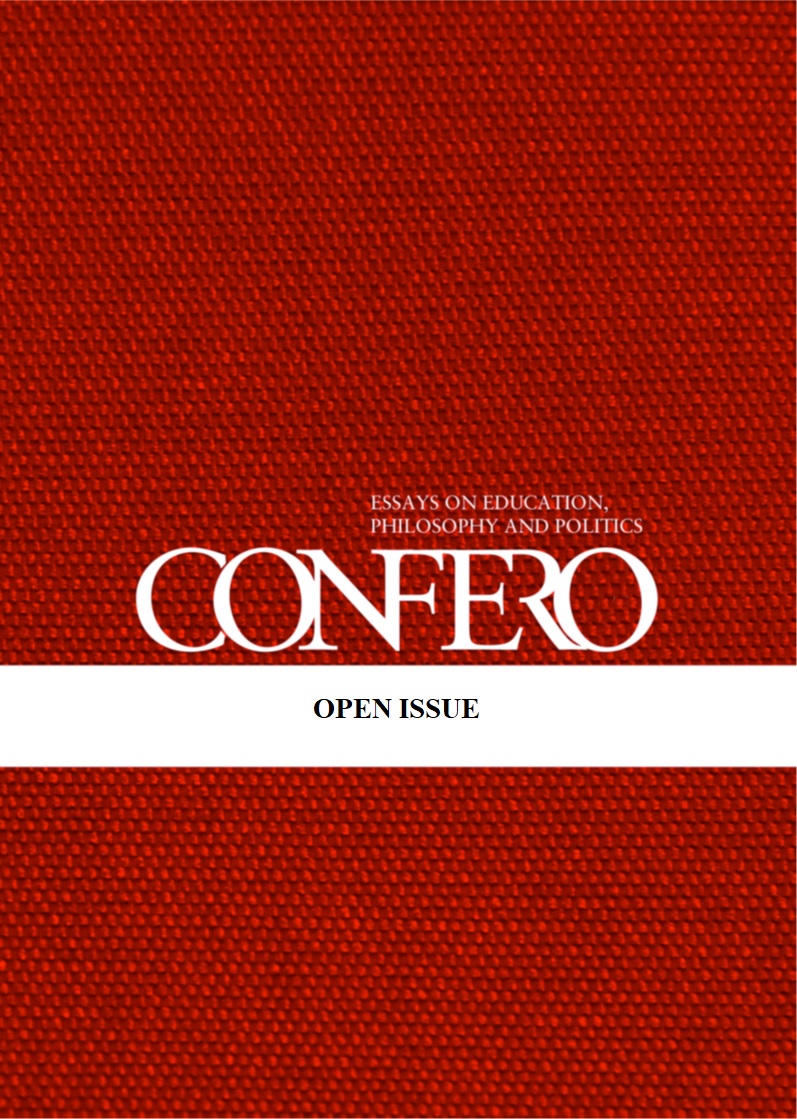Human vs Environment
An Ecolinguistic Analysis of the Game Valheim from a Didactic Perspective
DOI:
https://doi.org/10.3384/confero.2001-4562.231212Abstract
ABSTRACT
References
Aarseth, E. (2012a). Playing Research: Methodological Approaches to Game Analysis. In B. and introd. . Herzogenrath (Ed.), Travels in Intermedia[lity]: ReBlurring the Boundaries (pp. 175–191). Dartmouth College Press.
Aarseth, Espen (2012b). “A narrative theory of games”. I: Foundations of Digital Games Conference Proceedings, s. 129–133.
Aarseth, Espen & Möring, Sebastian (2020). “The game itself? Towards a hermeneutics of computer games”. I: Foundations of Digital Games Conference Proceedings. https://doi.org/10.1145/3402942.3402978
Bennet, Andrew & Royle, Nicholas (2009). An introduction to literature, criticism and theory. 4th ed. New York: Longman.
David, Matthew. & Sutton, Carole D. (2016). Samhällsvetenskaplig metod. Lund: Studentlitteratur
Genette, Gerard (1997). Paratexts: thresholds of interpretation. Cambridge: Cambridge University Press.
Hall, Stuart. (2013). Representation: London : SAGE, 2013, 2. ed.
Iron Gate Studios (2021). Valheim [Digital game]. Iron Gate.
Janks, Hilary (2010). Literacy and power. London: Routledge. Janks, Hilary (2014). Doing critical literacy. Texts and activities for students and teachers. London: Routledge.
Korten, David (2006). The great turning: from empire to earth community. San Francisco: Berrett-Koehler.
Kress, Gunther R. (2004). English in urban classrooms : a multimodal perspective on teaching and learning. New York, NY: RoutledgeFalmer.
Kress, Gunther & van Leeuwen, Theo (2006). Reading images: the grammar of visual design. 2nd ed. London: Routledge.
Magnusson, Petra (2014). Meningsskapandets möjligheter: multimodal teoribildning och multiliteracies i skolan [elektronisk resurs]. Diss. Malmö högskola. http://muep.mau.se/handle/2043/17212
Mogensen, F., & Schnack, K. (2010). The action competence approach and the ‘new’ discourses of education for sustainable development, competence and quality criteria. EnvironmentalEducation Research, 16(1), 59–74. https://doi.org/10.1080/13504620903504032
Nordén, B. (2018). Transdisciplinary teaching for sustainable development in a whole school project. Environmental Education Research, 24(5), 663–677. https://doi.org/10.1080/13504622.2016.1266302
Olin-Scheller, Christina (2006). Mellan Dante och Big Brother: en studie om gymnasieelevers textvärldar [elektronisk resurs]. Diss. Karlstads universitet. http://urn.kb.se/resolve?urn=urn:nbn:se:kau:diva-474
Olin-Scheller, Christina & Tanner, Marie (2018). “‘Den heliga skönlitteraturen och det uppkopplade klassrummet”. In: Nordenstam, A. & Parmenius Swärd, S. (ed) SLÅ 2018 Digitalt, s. 151–166.
Ripple, William J, Wolf, Christopher, Gregg, Jillian W, Levin, Kelly, Rockström, Johan, Newsome, Thomas M, Betts, Matthew G, Huq, Saleemul, Law, Beverly E, Kemp, Luke, Kalmus, Peter & Lenton, Timothy M, World Scientists’ Warning of a Climate Emergency 2022, BioScience, 2022; biac083, https://doi.org/10.1093/biosci/biac083
Sjödén, Björn (2018). “Från läroböcker till digitala läromedel – nio frågor på vägen. In: Nordenstam, A. & Parmenius Swärd, S. (ed) SLÅ 2018 Digitalt, s. 60–82.
Steam (2022). Valheim. [Retrieved 2022-05-31] https://store.steampowered.com/app/892970/Valheim/
Stibbe, Arran (2019). “Education for sustainability and the search for new stories to live by”. I: J. Armon, S. Scoffham, and C. Armon, eds. Prioritizing Sustainability Education: A Comprehensive Approach. London: New York: Routledge, s. 233–243.
Stibbe, Arran (2021). Language, Ecology and the Stories We Live By. 2nd ed. London: Routledge.
Swedish National Education Agency (2011). Läroplan för gymnasieskolan: Reviderad 2017. [Retrieved 2022-05-31] https://www.skolverket.se/publikationsserier/styrdokument/2011/gymnasieskola-2011
Swedish National Education Agency (2020a). Multimodal teori stärker eleverns meningsskapande. [Retrieved 2022-05-31] https://www.skolverket.se/skolutveckling/forskning-och- utvarderingar/forskning/multimodal-teori-starker-elevers-meningsskapande
Swedish National Education Agency (2020b). Multimodalt berättande inspirerar elever och lärare. [Retrieved 2022-05-31] https://www.skolverket.se/skolutveckling/forskning-och-utvarderingar/artiklar-om-forskning/multimodalt-berattande-inspirerar-elever-och-larare
Thavenius, Jan. (1999). Svenskämnets historia. Lund: Studentlitteratur.
Uhrqvist, O., Carlsson, L., Kall, A. S. & Asplund, T. (2021). Sustainability Stories to Encounter Competences for Sustainability. Journal of Education for Sustainable Development, 15(1), 146–16
Valheim, 2022. https://www.valheimgame.com/ [Retrieved 2022-05-31]
Valheim, 2022. Wiki. [Retrieved 2022-05-31] https://valheim.fandom.com/wiki/Valheim_Wiki
Wessbo, S. & Uhrqvist, O. (2021). Bildning för hållbar utveckling och dess potential för svenskämnets undervisning. Forskning om undervisning och lärande, 9(3), 6-27.
White, L. (1967). The Historical Roots of Our Ecologic Crisis. Science, 155(3767), 1203–1207. http://www.jstor.org/stable/1720120
Wiek, A., Withycombe, L. & Redman, C. L. (2011). “Key competencies in sustainability: a reference framework for academic program development”. Sustainability science nr. 2, 203–218.
Wiek, A., Bernstein, M.J., Foley, R.W., Cohen, M., Forrest, N. Kuzdas, C., Kay, B. & Withycombe Keeler, L. (2015). Operationalising competencies in higher education for sustainable development. In: Barth, M., Michelsen, G., Rieckmann, M. & Thomas, I. Routledge handbook of higher education for sustainable development, 241–260. Routledge: London and New York.
Downloads
Published
Issue
Section
License
Copyright (c) 2023 Hampus Björk, Ebba Mellberg, Simon Wessbo

This work is licensed under a Creative Commons Attribution 4.0 International License.
As Confero is an open access journal, this means that anyone who can access the Internet can freely download and read the journal. There are no commercial interests for Linköping University Electronic Press or Confero in publishing the journal.
The core idea of open access is that copyright remains with the author(s). However, we publish with the agreement of the author that if she or he decides later to publish the article elsewhere, that the publisher will be notified, prior to any acceptance, that the article has already been published by Confero.
When publishing with Confero, it is with the agreement of the author that if they make their article available elsewhere on the internet (for example, on their own website or an institutional website), that they will do so by making a link to the article as published in Confero using the Digital Object Identifier (DOI) number of the article and acknowledge in the text of the site that the article has been previously published in Confero.
As evident by the markers on our homepage, Confero falls under the Creative Commons licence abbreviated BY. This means that we allow others to use, spread and elaborate on the published articles, as long as they acknowledge who published it and where it was originally published.



